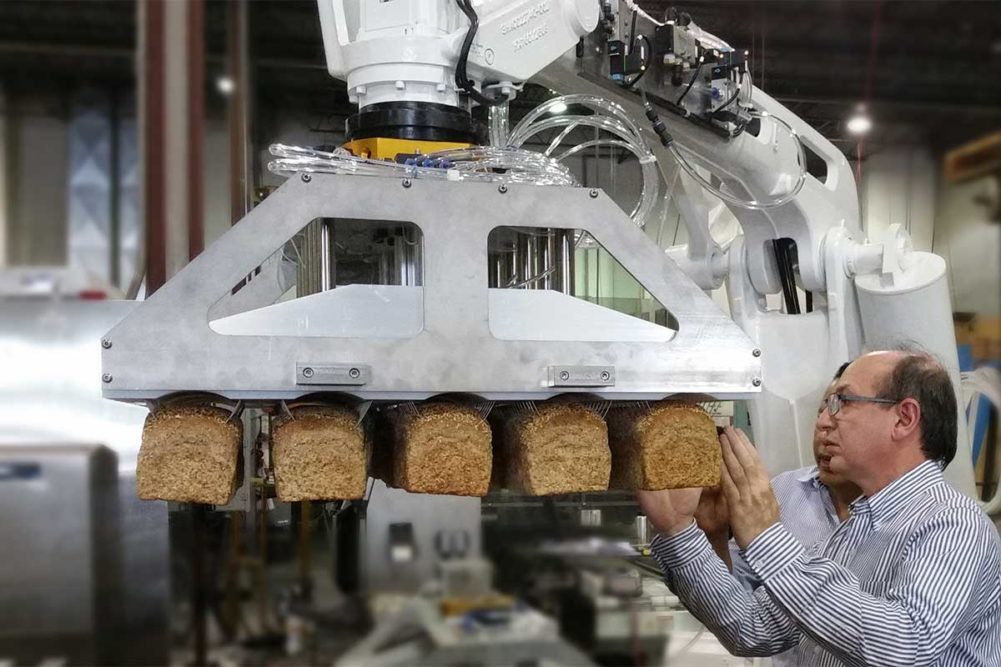Bakeries have a variety of methods to ensure a clean depanning of healthy breads, including using pans with special release coatings or greasing them.
“The coating helps with the release of the dough piece. And there are various schools of thought on that,” said Michael Cornelis, vice president of international sales and development, American Pan, a Bundy Baking Solutions company.
“Mostly all of those schools of thought are stemming from the question, ‘Are you going to put in an industrial version of Pam? Are you going to apply a release agent or pan oil spray? Or are you not?’ Once we know that decision, then we design the coating to fit that need. If no pan oil is used, then we recommend an industrial pan release coating.”
Nigel Morris, head of technology for Royal Kaak, said many European bakers are installing washing systems into their lines. The pans are washed frequently, which contributes to easy depanning.
“The pans stay very clean,” he said. “Typically when the bread sticks, it doesn’t normally stick to the pan itself, but it tends to stick to baking debris or the grease that starts to build up in the pan. So if you keep them clean all the time, then the chances of sticking become less.”
Although gluten-free doughs can be very sticky, the pans they bake in don’t usually need extra care.
“It is just the stickiest dough you’d ever touch in your life,” Mr. Cornelis said. “But when it comes in contact with the pan and bakes out, it’s no different than any other kind of dough. They’re pretty easy to release. It’s typically because once the crust forms, it performs pretty much like a dough with gluten.”
Mr. Cornelis said pans holding breads with inclusions shouldn’t need any extra coating or release agents either and won’t burn in the pans.
“You want the pan to be at ambient room temperature or slightly warm before you put the dough piece in. Then the inclusions are really not going to burn,” he said. “Baking bread or rolls is just a different bake process than a high-heat pizza crust, for example. That’s where you can get burning and scorching.”
Depanning was a problem for a customer of ABI Ltd. that made healthy breads because the traditional vacuum suction typically used would compromise the integrity of the product, which was topped with seeds. So the company used its Robotic Depanning System with needle grippers.
“This type of gripper is made of thin needles that form an ‘X’ when inserted into the product,” said Alexey Yaganov, sales applications engineer with the company. “The formation allows a firm handle on the loaf without disturbing its surface.”
For breads with allergens like dairy or tree nuts, bakeries can use pans with a special purple coating that signifies the pan is used for those types of doughs. Bakeries might have two sets of pans, one for regular breads and another for breads with allergen ingredients. Bakeries can also rely on striped pans, with each color indicating a different allergen for each pan.
“If one pan comes in contact with tree nuts, we might stripe it with green,” Mr. Cornelis said. “If another pan has contact with cheese, we might stripe it with orange. And they’ll keep separate sets of pans just for those types of inclusions.”
Bakeries interested in manufacturing healthy breads must be aware of the challenges they pose and ensure they are properly mixing, dividing, moulding and baking them. A little extra care and adjustment will produce high-quality breads without headaches.This article is an excerpt from the May 2022 issue of Baking & Snack. To read the entire feature on Pan Bread Processing, click here.






